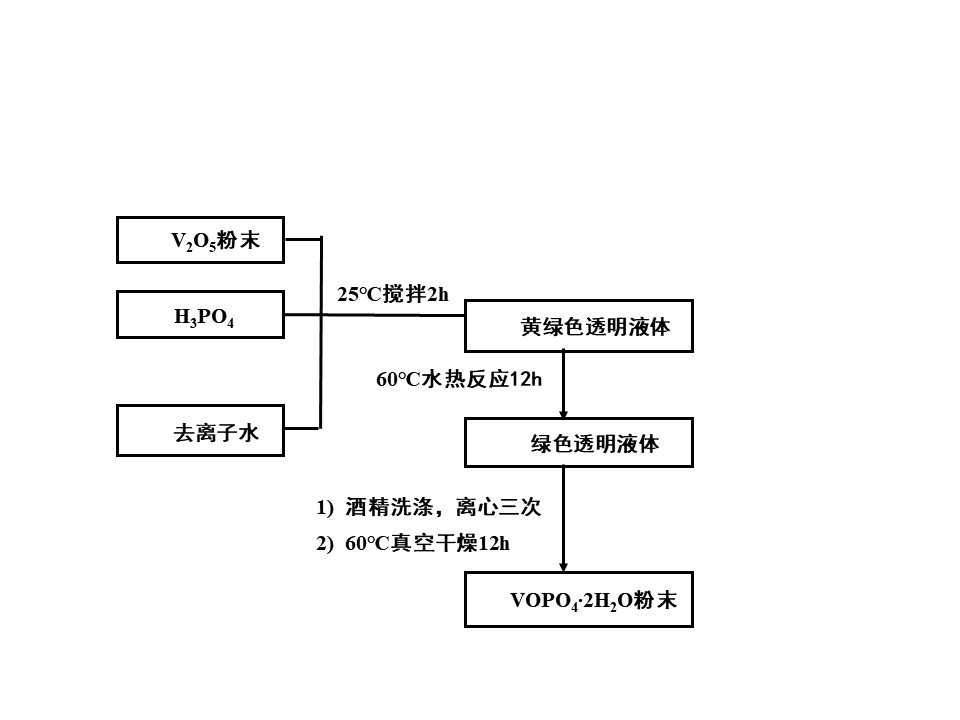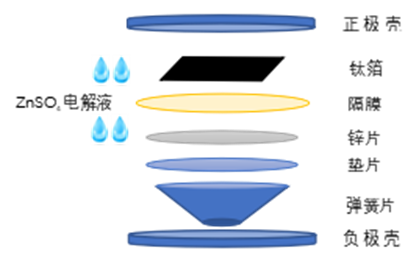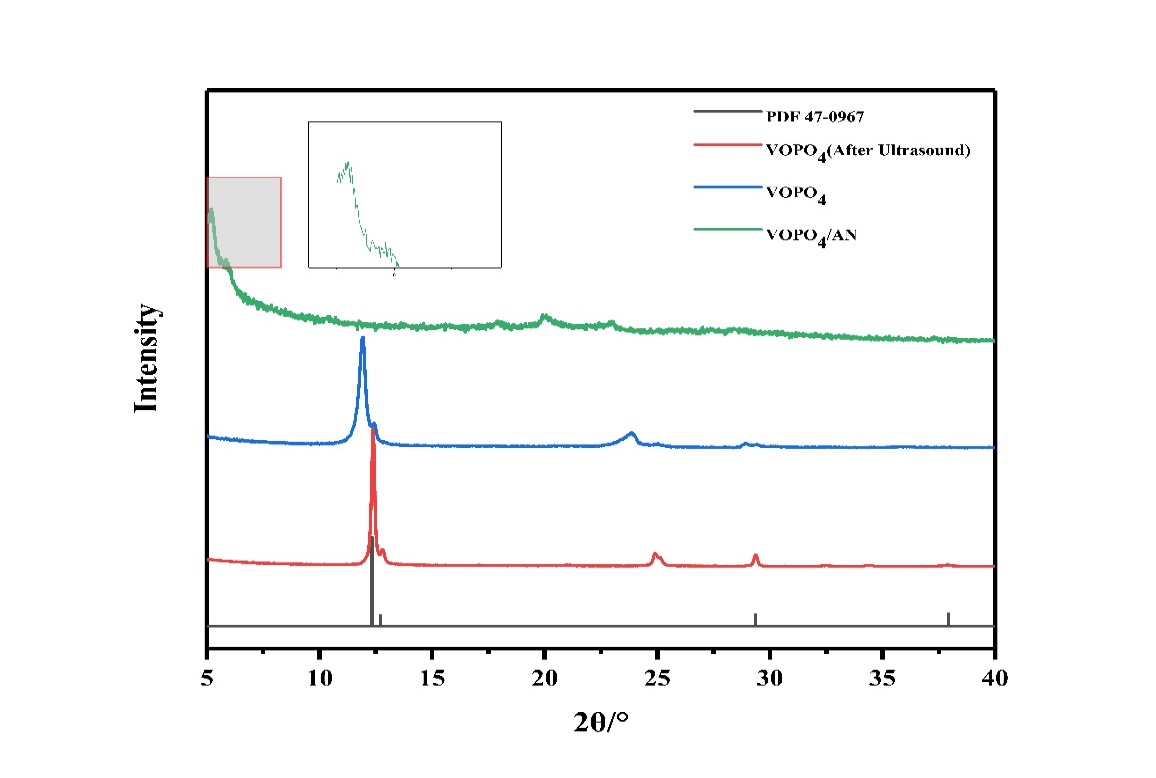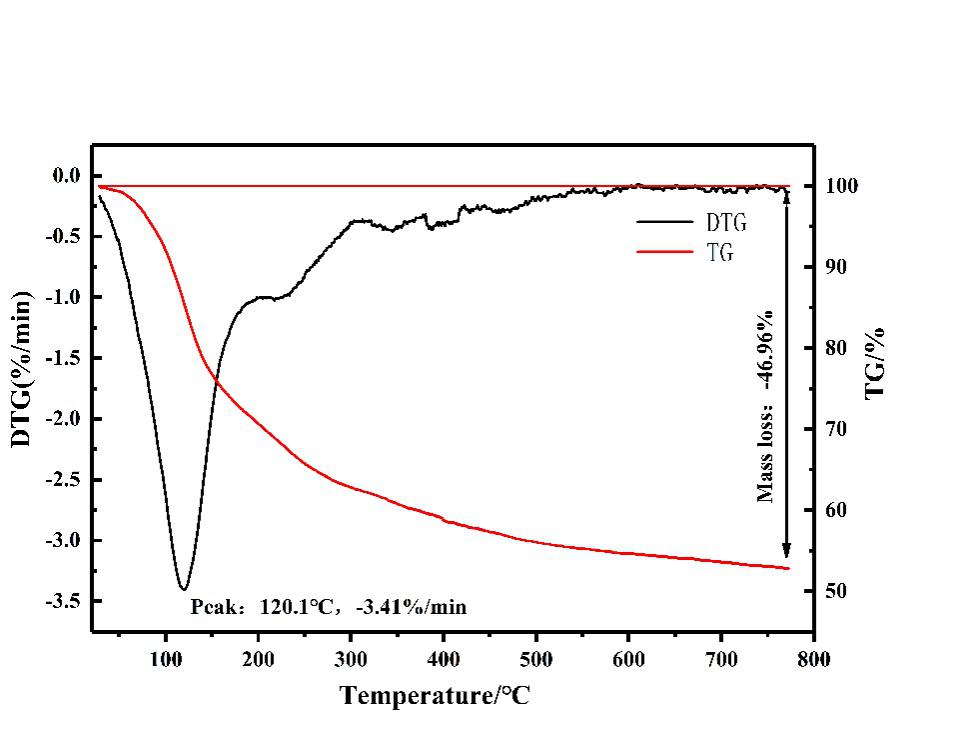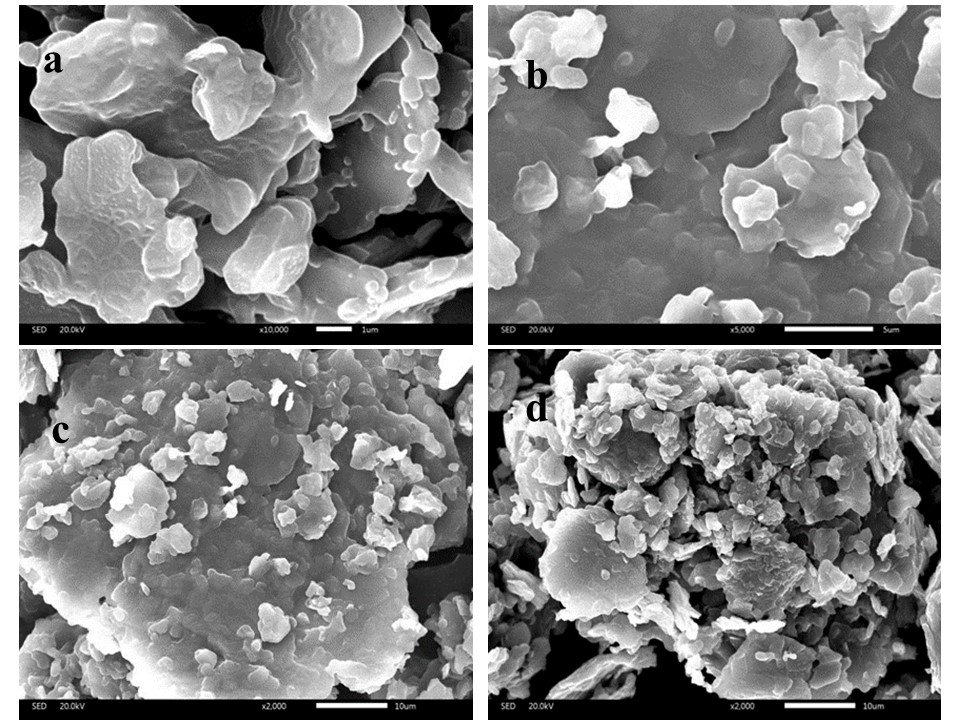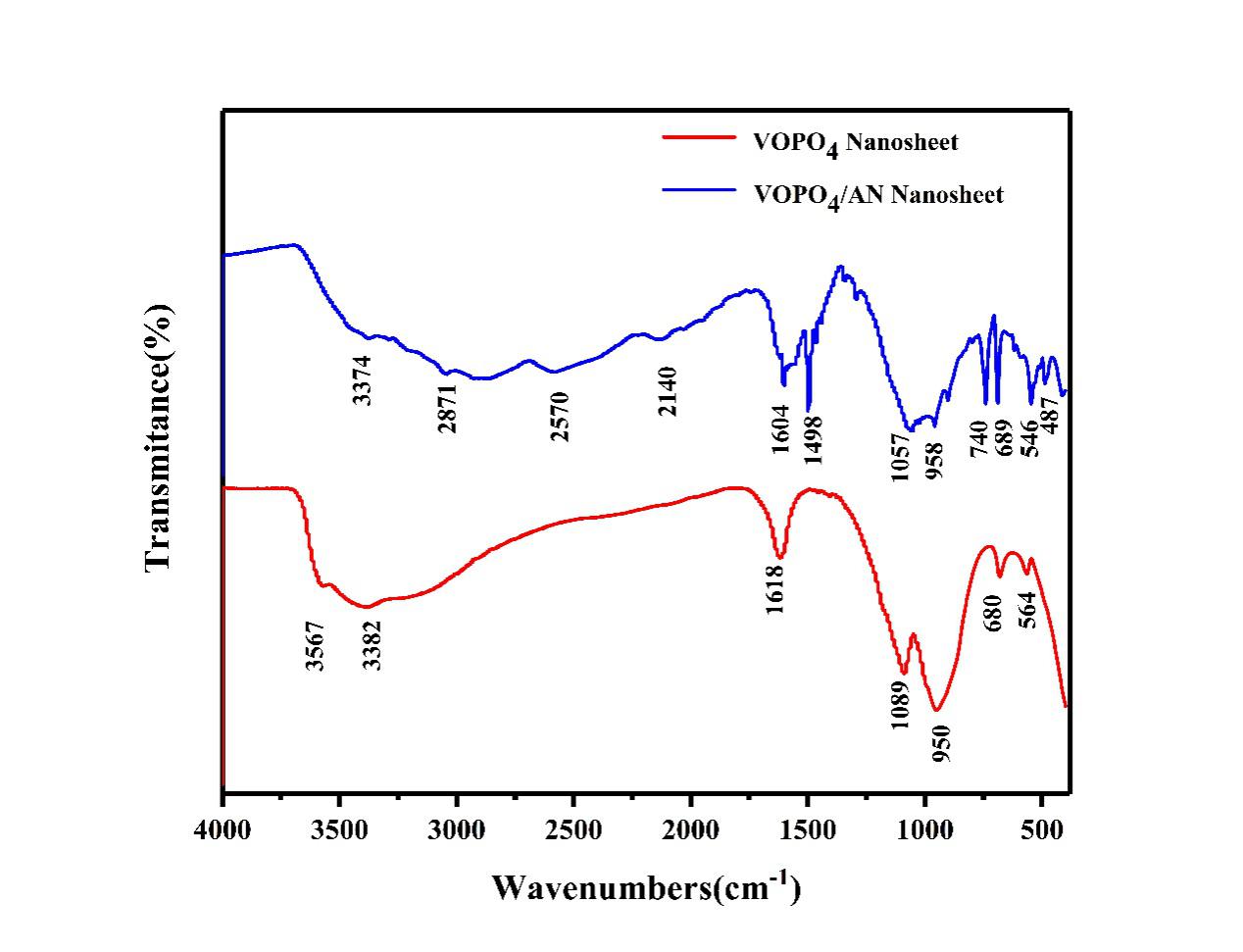二维VOPO4纳米片在水系锌离子电池中的研究毕业论文
2020-02-19 16:01:17
摘 要
环境污染与能源短缺问题越来越严重,研究储量丰富、价格低廉但又无毒无害的锌离子电池就显得很有意义。电极材料是电池的核心,本文以VOPO4系水系锌离子电池为切入点,对其正极材料—二维VOPO4纳米片,进行研究掺杂苯胺改性。对VOPO4结构进行分析探讨,针对性掺杂极性的苯胺分子;简单探讨苯胺在VOPO4/AN中的掺杂量;确定苯胺在材料的结构与性能的影响。主要研究内容和结果如下:
VOPO4能够作为正极材料的核心在于其独特的二维结构。通过SEM、XRD以及电化学数据,可以明确知道VOPO4具有二维层状结构,无机层由VO6八面体和PO4四面体组成。VO6八面体强烈扭曲,它通常被认为是VO5金字塔,顶部有一个短的V−O键,底部有一个长的VO键。所有扭曲的VO6八面体有共同的顶点 形成无限的O−VO链。 PO4组在这些链之间形成桥梁,并产生3D框架。在磷酸氧钒层间一般而言存在以氢键链接的H2O,H2O的存在在某种程度上稳定增大了层间距。因此以此结构为启发,进一步针对性设计掺杂苯胺,以稳定增大层间距,提高VOPO4的电化学性能。
通过SEM、XRD、TR的数据分析,能够知道苯胺已经掺杂进入VOPO4层间,掺杂苯胺将层间距从0.713nm增加到1.675nm,增大了约0.962nm。对VOPO4/AN的热重曲线进行分析,计算出苯胺的掺杂量为46.96wt%,VOPO4/AN的分子式为VOPO4∙1.6CH5NH2。
将二维VOPO4纳米片、VOPO4/AN作为电极片对比分析,可以得到以下结论:掺杂苯胺后水系锌离子电池的初始放电比容量从47.3mAh∙g-1提高到66.4mAh∙g-1提升了40.38%,综合提升约100%;在循环伏安曲线中,存在没掺杂苯胺时存在三个氧化还原峰而掺杂苯胺时只有两个氧化还原峰。均说明掺杂苯胺后,苯胺的存在提高了VOPO4无机层间的稳定性,进而提高材料的电化学性能。
本文的亮点在于,从正极材料的结构特点以及水分子在VOPO4中的存在方式出发,巧妙设计掺杂同样极性、能够形成氢键且分子大小较大的苯胺,借此来提高水系锌离子电池的比容量、循环稳定性以及倍率性能等电化学性能。
关键词:磷酸氧钒纳米片;锌离子电池;水系电池;插层;
Abstract
Environmental pollution and energy shortages are becoming more and more serious. It is meaningful to study zinc-ion batteries that are abundant in reserves and low in price but non-toxic and harmless. The electrode material is the core of the battery. In this paper, the VOPO4 series water-based zinc ion battery is used as the cutting point, and the positive electrode material-two-dimensional VOPO4 nanosheet is studied to be doped with aniline. The structure of VOPO4 was analyzed and discussed, and the polar aniline molecules were doped. The doping amount of aniline in VOPO4/AN was briefly discussed. The influence of aniline on the structure and properties of the materials was determined. The main research contents and results are as follows:
The core of VOPO4 as a positive electrode material lies in its unique two-dimensional structure. Through SEM, XRD and electrochemical data, it can be clearly seen that VOPO4 has a two-dimensional layered structure, and the inorganic layer is composed of VO6 octahedron and PO4 tetrahedron. The VO6 octahedron is strongly distorted. It is usually considered a VO5 pyramid with a short V−O bond at the top and a long VO bond at the bottom. All twisted VO6 octahedrons have a common apex to form an infinite O−VO chain. The PO4 group forms a bridge between these chains and produces a 3D framework. There is generally a hydrogen bond-linked H2O between the vanadium phosphate layers, and the presence of H2O stabilizes the layer spacing to some extent. Therefore, inspired by this structure, the aniline is further specifically designed to stably increase the interlayer spacing and improve the electrochemical performance of VOPO4.
Through SEM, XRD and TR data analysis, it can be known that aniline has been doped into the VOPO4 layer, and the doping of aniline increases the layer spacing from 0.713 nm to 1.675 nm, which is increased by about 0.962 nm. The thermogravimetric curve of VOPO4/AN was analyzed, and the doping amount of aniline was calculated to be 46.96 wt%, and the molecular formula of VOPO4/AN was VOPO4∙1.6CH5NH2.
Comparing the two-dimensional VOPO4 nanosheets and VOPO4/AN as electrode sheets, the following conclusions can be drawn: the initial discharge specific capacity of the water-based zinc ion battery after the aniline is increased from 47.3mAh∙g-1 to 66.4 mAh∙g-1 About 40.38%, the overall increase is about 100%; in the cyclic voltammetry curve, there are three redox peaks when there is no aniline doping and only two redox peaks when doping aniline. It is indicated that the presence of aniline increases the stability of the inorganic layer of VOPO4 after doping with aniline, thereby improving the electrochemical performance of the material.
The highlight of this paper is that, from the structural characteristics of the positive electrode material and the existence of water molecules in VOPO4, the ionic amines with the same polarity, capable of forming hydrogen bonds and having a large molecular size are skillfully designed to improve the water-based zinc ion battery. Electrochemical properties such as specific capacity, cycle stability, and rate performance.
Key Words: vanadyl phosphate nanosheet; zinc ion battery; water battery;intercalation.
目 录
摘 要 I
Abstract II
第1章 绪论 1
1.1引言 1
1.2锌离子电池介绍 1
1.2.1 锌离子电池简介 1
1.2.2 锌离子电池的正极 2
1.2.3 锌离子电池的负极 3
1.2.4 锌离子电池的电解液 4
1.3 磷酸氧钒为正极的锌离子电池研究现状 4
1.4 限制因素及改性方法 4
1.5 选题的目的、意义和主要研究内容 5
1.5.1 本文研究的目的和意义 5
1.5.2 本文研究的依据和主要内容 5
第2章 钒系锌离子电池的制备及表征 7
2.1 实验试剂和仪器 7
2.2 锌离子电池正极材料的制备方法 7
2.2.1 VOPO4∙2H2O的制备 7
2.2.2 活性物质的制备 8
2.2.3 电极片的制备 9
2.3 电池的组装 9
2.4样品的测试与表征 10
2.4.1 VOPO4正极材料的表征 10
2.4.2电化学性能测试 11
第3章 锌离子电池正极结构及电池性能分析 12
3.1 锌离子电池正极材料分析 12
3.1.1 X射线衍射(XRD)谱图分析 12
3.1.2 热重物质(TG)分析 13
3.1.3 扫描电子显微(SEM)显微结构分析 14
3.1.4红外光谱(IR)分析 15
3.2 电化学性能分析 17
3.2.1 循环伏安(CV)性能分析 17
3.2.2 恒流充放电分析 18
第4章 结论与展望 21
4.1 结论 21
4.2 展望 22
参考文献 23
致 谢 25
第1章 绪论
1.1引言
伴随着不可再生资源的枯竭,以及环境问题日益凸显。人们对各类可再生能源的开发利用逐渐重视[1]。可再生能源的产生受地域影响较大以及间歇性产生,因此,寻找兼顾安全与成本低廉的储能材料变得最为迫切。虽然锂离子电池在小型便携性电子设备得到广泛商业应用,但是广泛应用的非水系锂离子电池的电解液为有机电解液,安全性堪忧。更为先进的水系锂离子电池虽也正在研发,但在电解液中能够稳定存在的水系锂离子电池的质子电位窗口较小[2]。并且有限金属锂资源、高昂的提纯价格、低的安全可靠性,再加上安全的水系锂离子电池发展受限,于此种种限制了水系锂离子电池的进一步发展[3]。因此,近年来,研究储量丰富、价格低廉但又无毒无害的锌离子电池就显得很有意义[4,5]。
相比于已经被广泛研究并成熟应用的锂离子电池而言,锌离子电池的突出优势在于:
1)锌负极具有高体积能量密度(5855mAh∙cm-1)、安全、无毒,作为高析氢过电位金属,锌-0.763V的电极电位更适合于水性电池体系;
2)在近中性或弱酸性的电解液中(如ZnSO4、Zn(CF3SO3)2溶液),不易出现锌枝晶且亦不存在碱性锌电池中由于ZnO导致的低库伦效率、短寿命问题;
3)简单、便宜、环境友好的特点,使得其易于制造和回收。
然而,和其他多价离子一样,Zn2 脱嵌过程中引起的高静电交互作用,对正极材料提出了较高要求。
本文中,作者针对锌离子电池的问题对其正极材料进行研究,设计采用VOPO4作为正极材料试图解决锌离子电池目前所遇到的问题。实验计划以水热反应制得的VOPO4作为活性物质,通过进一步的处理,将层状的VOPO4活性物质层间距经一步加大制备得含有二维磷酸氧钒纳米片的电极片,此电极片直接作为电极使用。
1.2锌离子电池介绍
1.2.1 锌离子电池简介
锌离子电池的定义源于其充放电过程中,正极材料可进行Zn2 的脱嵌,负极可进行Zn的氧化溶解/Zn2 的还原沉积,电解液为含Zn2 的近中性或弱酸性水性溶液。其不同于碱性锌电池(负极为锌及其氢氧化物/氧化物的溶解/沉积反应,正极为质子脱嵌反应如传统的锰-锌、镍-锌电池,或正极与氢氧根反应如四氧化三钴-锌电池),亦区别于其他利用锌作为负极的非碱性电池体系(负极为锌的溶解沉积反应,正极为其他离子参与的反应,其本身不发生Zn2 脱嵌)。下面是充电过程的正负极反应:
锌离子电池:正极 2e- Zn→Zn2 ;
负极 Zn2 →2e- Zn
碱性锌电池:负极 Zn(OH)42- 2e-↔OH- Zn
非碱性混合锌电池:负极 Zn2 ↔2e- Zn
1.2.2 锌离子电池的正极
由于离子电池的充放电过程涉及相应离子的脱嵌−嵌入,这就要求正极能够提供通道使离子传质过程顺利完成,换言之就是要求正极材料有孔隙、层距、隧道等作为通道让离子传质更为顺利。目前,报道的锌离子电池正极材料主要有锰基正极(α-MnO2、γ-MnO2、钡镁锰矿型MnO2)、金属铁氰化物(普鲁士蓝衍生物,MFe(CN)6 (M = Fe, Co, Ni, Cu, Mn…))、有机物、Mo6S8和钒基正极(V2O5)等(如图1-1所示)。磷酸氧钒是一种层状的材料,具有很大的表面积,目前已经证实锂离子嵌入发生在磷酸氧钒分层中,这就让人感到兴趣,同样层状结构的磷酸氧钒能否运用在锌离子电池体系。
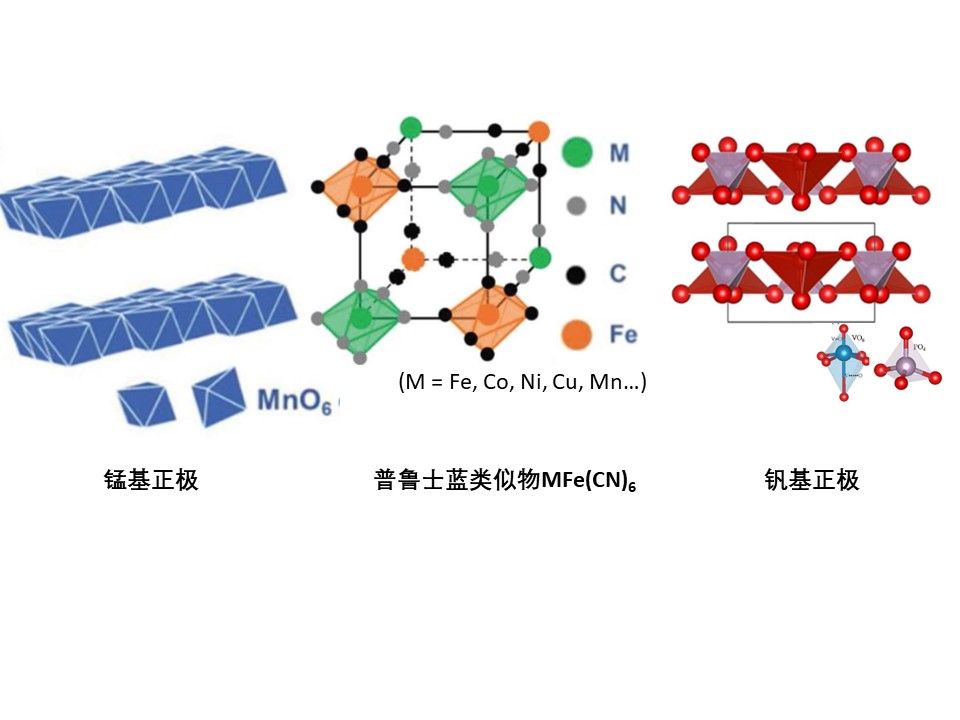
图1-1 各类多价离子电池正极材料
钒元素在自然界中资源丰富,化合价多样(从 2价到 5价),本文采用的正极材料磷酸氧钒(VOPO4)中的钒元素为 5价,与五氧化二钒中的钒元素化合价一致。磷酸氧钒的晶型多样有四方α1,单斜α1,α2型和β型(如图1-2),其中四方α1,单斜α1,α2型是层状结构能够经过设计作为电极的正极活性材料使用。
通常,VOPO4的各种晶型的所有结构均由VO6八面体和PO4四面体组成。VO6八面体是如此强烈扭曲,它通常被认为是VO5金字塔,顶部有一个短的V−O键,底部有一个长的VO键,如图一所示。所有扭曲的VO6八面体有共同的顶点形成无限的O−VO链。PO4组在这些链之间形成桥梁,并产生3D框架。在磷
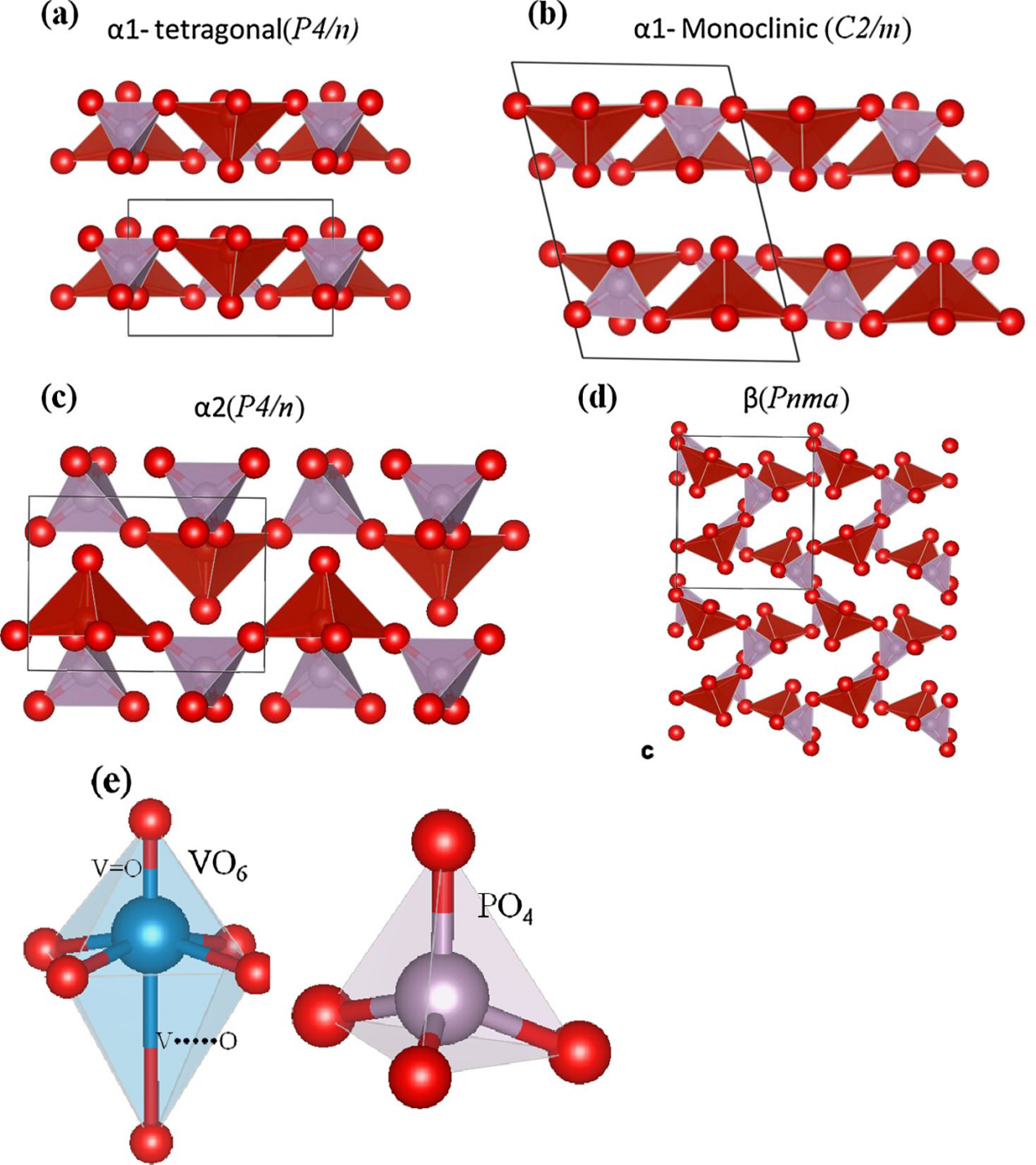
以上是毕业论文大纲或资料介绍,该课题完整毕业论文、开题报告、任务书、程序设计、图纸设计等资料请添加微信获取,微信号:bysjorg。
相关图片展示:
